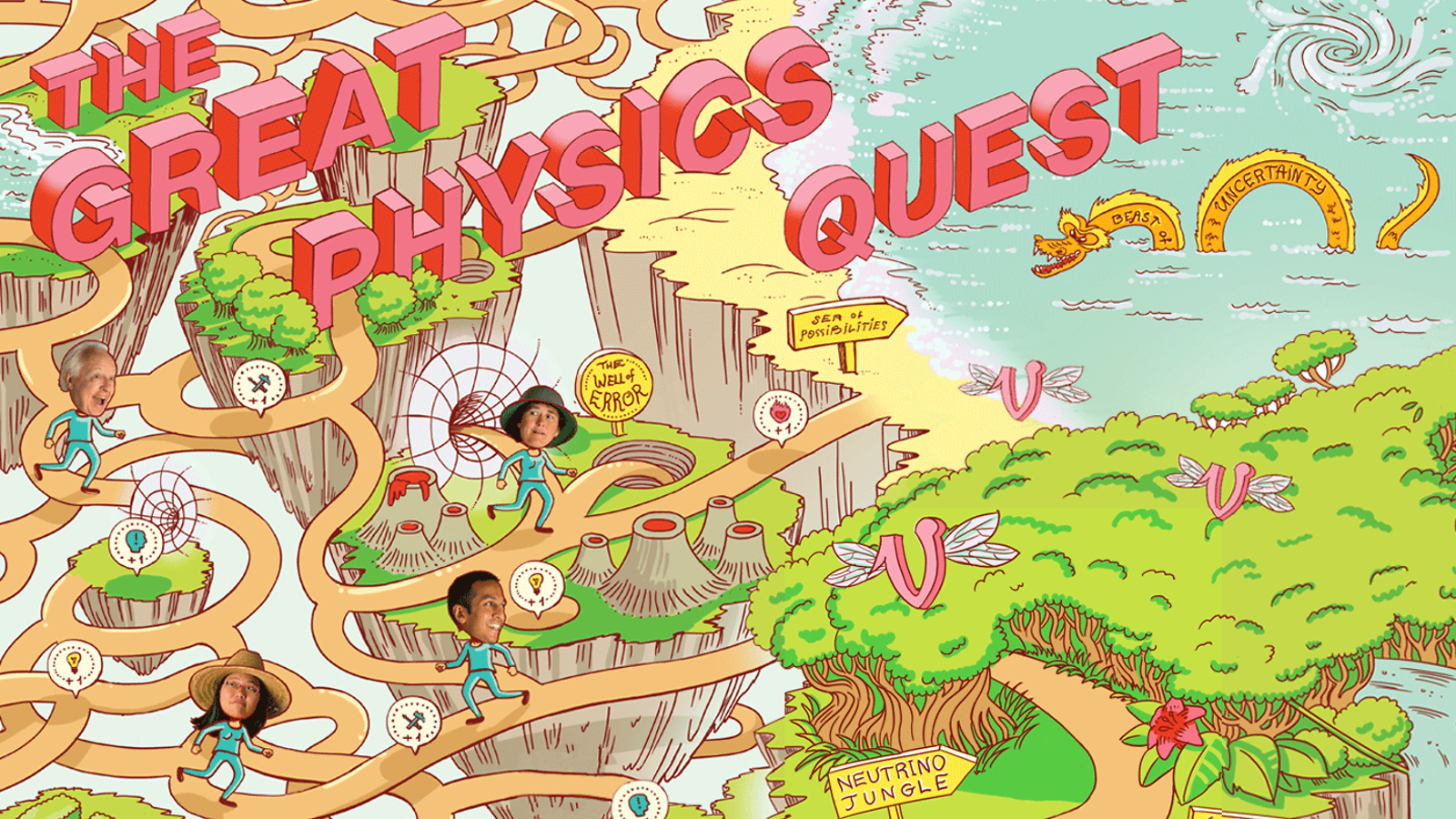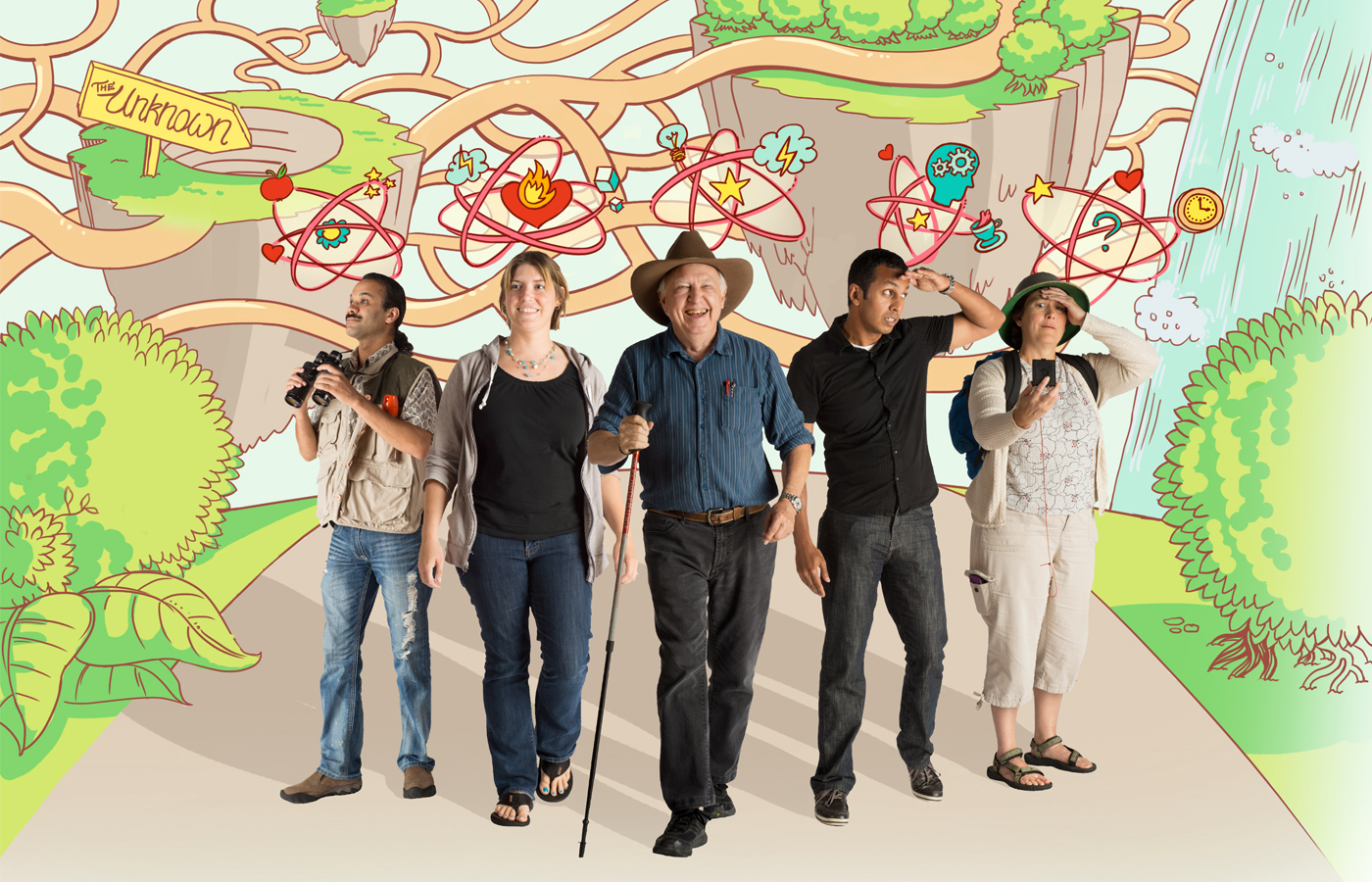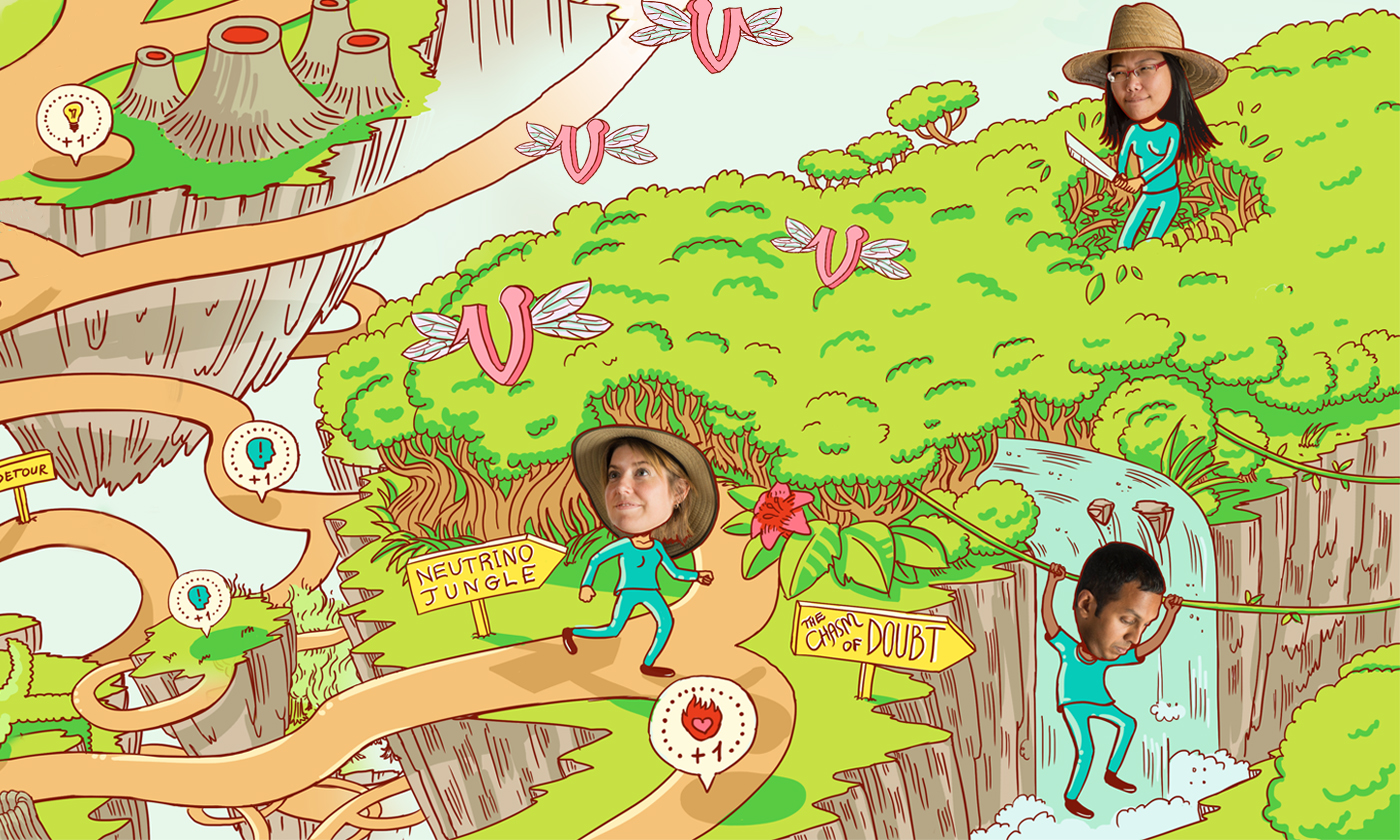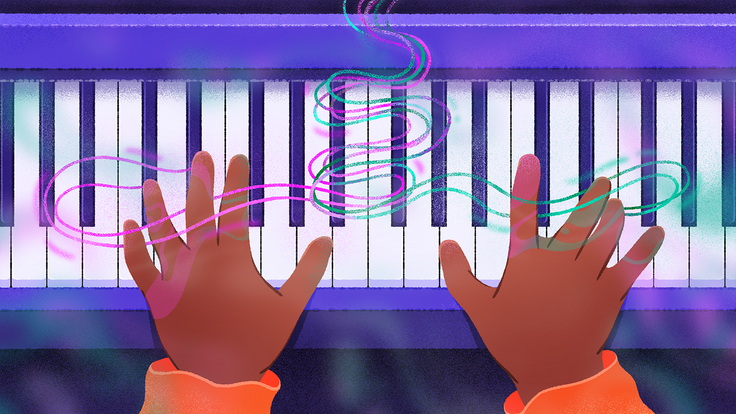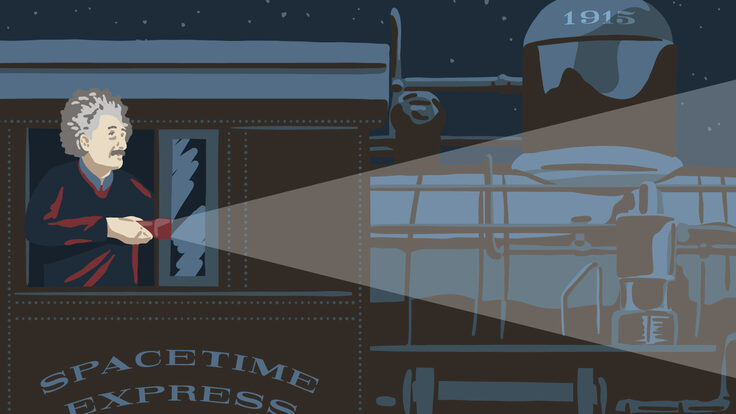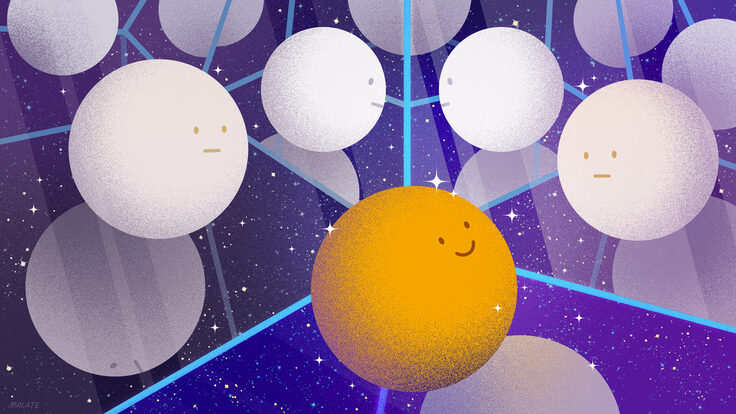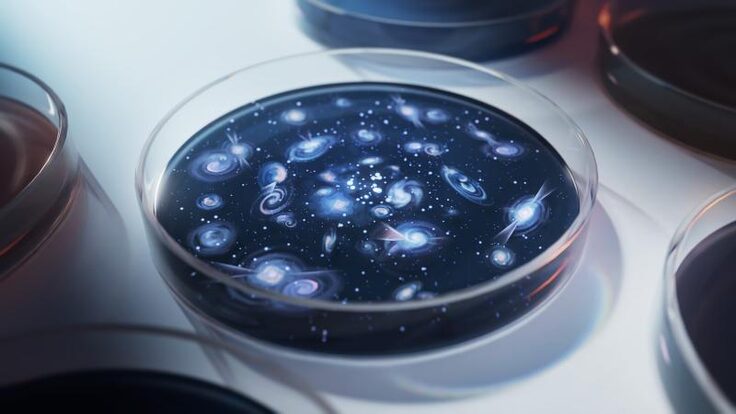Humanity’s first glimpse of the very deepest part of the ocean seemed disappointing indeed.
A small crew had worked for two years to prepare the Trieste—one of just two submersibles in the world—for the historic 7-mile plunge to the bottom of the Mariana Trench. But when US Navy Lieutenant Don Walsh and Swiss engineer Jacques Piccard hit bottom in 1960, all they could see out the porthole was the muck stirred up by their landing. “It was like looking into a bowl of milk,” Walsh, now 81, later recalled.
Yet in the annals of exploration, the dive was a huge success. It developed and tested the engineering that would make deep ocean exploration possible, opening a new realm to scientific understanding. In hundreds of dives over the next few decades, scientists in submersibles would discover a netherworld of fragile, jelly-like creatures and exuberant ecosystems fed by deep-sea vents. Their findings would reveal the ocean’s pivotal role in the functioning of the planet and even, perhaps, in the start of life on Earth.
Today, all over the world, particle physicists are carrying out their own deep dives in the most fundamental exploration of all.
Their goal is to learn how the cosmos works by studying its tiniest constituents—subatomic particles—and the forces that act on them.
Like the ocean, the realm they explore is vast, extreme and extravagantly weird. Sometimes they discover the unexpected in a flash of insight; sometimes it takes years, even decades, of dogged effort to clear the dust, tease out a discovery and figure out what it means.
As in any voyage into the unknown, this one takes creativity, guts, meticulous preparation, a tinkerer’s skill, a puzzler’s obsession and a curious heart, not to mention the money to pay for it all. The results are wonderfully unpredictable.
“There is a combination of dream and passion to discover how the physical world actually works,” says experimental physicist Maria Spiropulu of the California Institute of Technology, whose team recently developed a novel way to analyze data from the Large Hadron Collider in Europe. “A determination to break the box—not just think outside of the box—when the box gets in the way. A lot of failures and discouragement on the way, and a lot of traps and pitfalls, and a lot of perseverance and indomitable spirit in action in order to keep going.”
Setting forth
Whether through storm-tossed waves or jungle thickets, every expedition begins with a map. In this case the journey starts with the Standard Model, which describes the fundamental particles and interactions we know today. Like an ancient map of the known world, it expands to accommodate new discoveries; the Higgs boson, for instance, recently took its place on the Standard Model chart, alongside the 12 known quarks and leptons and four other particles that carry forces.
The Standard Model doesn’t explain everything. Gravity, for instance, is unaccounted for, and what we know about neutrinos doesn’t quite fit. And, in fact, the more physicists learn, the more baffling the universe looks.
Are there undiscovered principles of nature? How about extra dimensions of space? Why are there so many kinds of particles? Is there more than one type of Higgs boson? What are the dark matter and dark energy that make up 95 percent of the cosmos, and how can we find out more about them? How do neutrinos fit into our understanding of matter, energy, space and time? How did the universe come to be? Why are we, and everything around us, made of matter rather than antimatter?
To attack these tough problems, physicists join forces. Theorists do most of the navigating, pointing out promising directions. Experimentalists are the lookouts, suppliers, naturalists and logisticians: They design, build and run cutting-edge accelerators, detectors and other machines, collect data and scrutinize it for signs of something new. They couldn’t get far without the help of computer simulations, which help them understand where their apparatus might take them.
“Once we decide what ideas have appeal and what journeys seem possible,” says SLAC physicist Tim Nelson, “we equip ourselves and head out.”
Adventures in parameter space
In the classic adventure tale, people trek out into an unknown landscape—rugged mountains, deep space, inhospitable wastelands. In the classic particle physics experiment, scientists create a set of conditions—such as energies released by particle collisions—that might allow a previously unknown particle to appear. These conditions are known as “parameter space,” and exploring the parameter space where a particle might be found is an important part of the discovery process. In many cases it’s a process of elimination—Nope, it’s not here! Not here, either!—that gradually corners the quarry, whether the top quark, the Z boson or the Higgs.
As in ordinary life, all the easy-to-reach terrain has already been scouted and settled. So going after the parameter spaces where new particles and forces may lurk grows more difficult over time.
Particle physicists take three basic approaches, often described as discovery frontiers.
On the energy frontier, they make particles collide at high energies, liberating large amounts of energy that can coalesce into new, previously unknown particles.
On the intensity frontier, they use powerful particle accelerators and incredibly sensitive detectors to look for processes that are vanishingly rare, yet might reveal hidden particles or forces.
On the cosmic frontier, they build detectors to catch particles coming in from space. Some of these detectors are buried deep underground, to shield them from interference; others are launched into orbit for an unimpeded view.
None of the frontiers stands completely alone; they interweave and feed off each other in a way that speeds the pace of discovery. No single approach can solve all the unanswered questions.
“The questions that we ask are so big and so simple that almost everyone—from children to pensioners—can understand and relate to them in some way,” said Ian Shipsey, an experimental physicist from Purdue University, at the Snowmass conference held in Minnesota in August to review opportunities for discovery in the field. “We are united in our desire to understand the universe around us.”
Stalking a dark force
A big part of particle physics involves designing and building the equipment to make experiments work.
For SLAC’s Nelson, this technical challenge is a big part of the appeal. A faint smell of electrical components hangs in his office; on his desktop are scissors, bundles of wire, a tape measure, an espresso cup and detector parts wrapped in foil to keep them clean. He describes himself as a natural risk-taker, fond of high-speed bike rides that put his mind in a meditative state conducive to solving problems. But at the same time, he says, when it comes to experiments, a physicist can’t be too careful: “We try to think of every single thing that can go wrong, try to make sure we’ve covered every single base.”
Right now he’s working on an experiment called the Heavy Photon Search, which would probe a most challenging parameter space. It would put a particle detector right next to a beam of particles—a hot, complicated, noisy environment—to look for an extremely faint signal that could be produced by the decay of a dark-matter photon. In the Standard Model, the photon is the carrier of the electromagnetic force, including light; no one knows what its dark-matter counterpart might do, if it exists at all.
The experiment will require a very fast silicon detector, very fine control of the particle beam and people with unique knowledge and skills, Nelson says. Fortunately the two dozen scientists on the HPS team, drawn from SLAC and Thomas Jefferson national laboratories, several US universities and institutes in France, Italy and Canada, have all three; and initial tests at Jefferson Lab, where the experiment will be carried out, have been promising.
Even so, that’s no guarantee of success.
“This is way out there. This is really a long shot, a flying leap,” Nelson says. “It’s overwhelmingly likely that we look through this whole parameter space and don’t find anything. But if we did, it would be the biggest discovery in particle physics since the discovery of the electron—like the discovery of alien life, it’s something so foreign to the known physics.”
Like Columbus launching an expedition, Nelson says, “You have to get your ships, get your crew, get your support together, and it doesn’t happen overnight. And there’s an element of luck—because if there’s nothing there, we won’t find it. You never know. Luck is for sure always a part of a major discovery.”
This proposed experiment is one of several dozen dark-matter searches now planned or underway, each combing a particular parameter space to find or rule out a dark-matter particle with specific characteristics. With this broad, many-pronged approach, scientists aim to give luck a helping hand and boost their chance of success.
It takes an expedition
Putting together a well-rounded expedition is an important part of doing particle physics. The biggest experiments, like those at the Large Hadron Collider, need thousands of people to envision, design and build the hardware—physicists have a long tradition of building their own tools—run the experiments, collect and analyze the data, solve problems, dream up new ideas to test, and coordinate the whole enterprise.
And—this may seem peculiar to an outsider—when they think they might have discovered something exciting, it is their solemn duty to try to prove it wrong, to kill the discovery before someone else does.
But this is a good thing.
“You can’t go down the wrong path for long,” says SLAC theorist JoAnne Hewett. “When there are 3000 people in a collaboration, you have 2999 watching you to make sure your conclusions are valid. So the quest is self-correcting.”
An undertaking this big may seem unwieldy. But in fact it’s made up of many smaller teams of people with highly specialized knowledge and skills, sharing both the work and the credit for what they achieve and bringing in outside help when needed.
For instance, Valerie Halyo of Princeton University is searching for ways to enhance the performance of the trigger system at the LHC. The trigger looks at the vast amount of particle collision data coming out of an LHC detector and automatically selects a small percentage of the most interesting particle events for further study. Rather than start from scratch, she consulted experts from Nvidia and Intel. Her team is using the companies’ off-the-shelf technology to write algorithms that select particular types of particles for tracking, including long-lived particles that travel a foot or more from the collision point before decaying, and do it faster than before. The technique promises to greatly expand the search for new physics.
“If technology already exists and I don’t have to develop the hardware, nothing could be better,” Halyo says. “People outside academia are very knowledgeable and competent and they also share the enthusiasm to contribute to the science. I think today, many things can only be achieved if you have an interdisciplinary attitude. It takes a village; everyone has to put on the table what they have.”
Changing course
As in the case of Christopher Columbus, who stumbled onto the New World while looking for a route to Asia, these voyages can end up in completely unexpected places.
Such was the case of the neutrino.
This particular quest started with a theory about how the sun works: The fusion of hydrogen nuclei to produce helium releases tremendous energy—the sun’s light and heat—as well as a number of particles, including neutrinos.
Ray Davis, a physicist at Brookhaven National Laboratory, thought he might capture some of those solar neutrinos, and thus learn something about the interior of the sun, in an experiment located nearly a mile underground in a South Dakota gold mine.
“When he set up his experiment, the argument was, ‘Who cares?’” says Joshua Klein of the University of Pennsylvania, a neutrino physicist and US spokesperson for the SNO+ experiment at Canada’s SNOLAB. People were pretty confident that fusion powered the sun, he says; what else could it be? What would detecting a few neutrinos get you?
But in 1968, Davis dropped a bombshell: Only one-third of the expected number of solar neutrinos was showing up in his detector.
Was there something wrong with the theory of how the sun works? Maybe it produced a lot fewer neutrinos than expected. Adding to scientists’ unease, the accepted theories said that neutrinos had no mass, but what Davis found implied that they did have mass somehow. Were those theories incorrect? Davis went back over every aspect of his experiment, double and triple checking, but found nothing wrong. As the mystery deepened, more and more scientists chimed in, developing techniques and building experiments that brought the problem into better focus.
Finally, they discovered what was going on: Electron neutrinos emitted by the sun were changing, or oscillating, into two other types of neutrinos during their 93-million-mile journey to Earth.
In 2002, after quietly plugging along on the solar neutrino problem well into retirement and inadvertently starting a whole new field of research, Davis shared the Nobel Prize in physics.
Today scientists are bushwhacking through the neutrino jungle from every possible direction— studying neutrinos made in exploding stars and nuclear reactors, arriving from deep space, coming up out of the deep Earth and produced by particle accelerators. They are trying to answer questions no one even imagined before Davis’ experiment: What do the three types of neutrinos weigh? What are the details of how they mix and oscillate into each other? A few experiments study extremely rare particle decays that may reveal whether the neutrino is its own antiparticle; the answer could help reveal why the universe is so deficient in antimatter. And the hunt is on for a fourth type of neutrino, the so-called “sterile” neutrino; if discovered, it would be the first known fundamental particle outside the Standard Model.
“There are still a lot of good things to find,” Klein says. “We may find surprises, like Ray Davis did.”
The next wave
In 2012, more than 50 years after the submersible Trieste touched down in the Mariana Trench, explorers finally returned to the deepest part of the ocean. With movie director James Cameron at the helm, the submersible Deepsea Challenger spent hours collecting samples and high-definition photos and video. The wonders it found included giant protozoans, dense, stringy mats of microbes, active mud volcanoes and a shrimp-like crustacean that contains a chemical identical to the active ingredient in an experimental drug for Alzheimer’s disease. Scientists will be poring over the results of this expedition for a long time to come, and Cameron has donated the submersible to an oceanographic institute for use in research.
Like the voyage of the Deepsea Challenger and the voyage of the Trieste before it, the recent discovery of the Higgs boson was just the start. The discovery of neutrino oscillations was just the start. And discovering the nature of dark matter and dark energy will be just the start of a new wave of exploration that leads us deeper into fundamental truths.
Sometimes the path leads straight to a prized discovery; sometimes it turns out to be a dead end. The true explorer hoists her knapsack, picks up her machete and prepares to hack a new path toward the exciting new world beyond.



